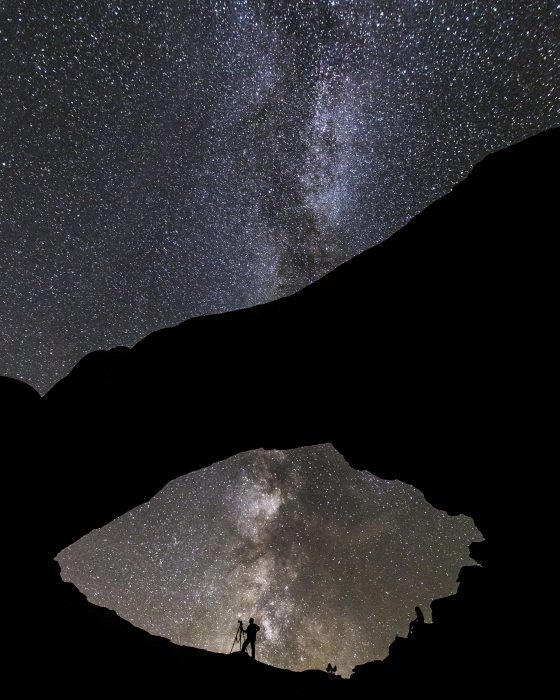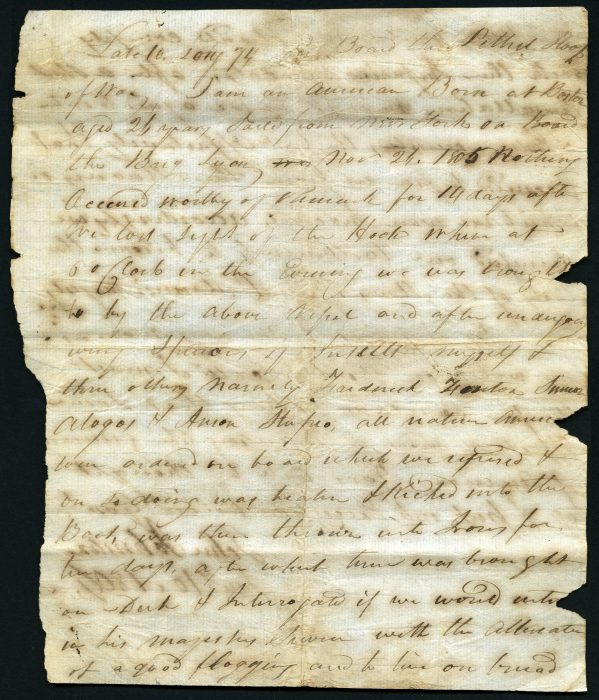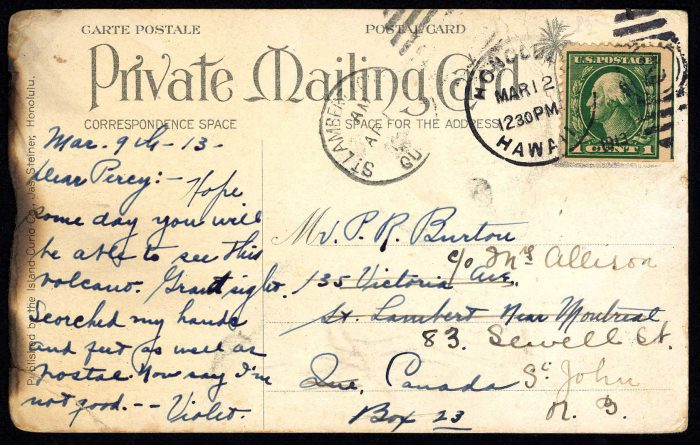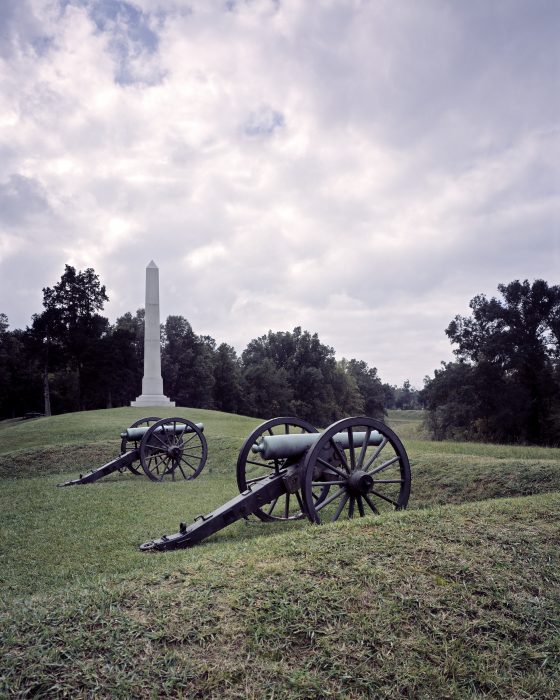Preserve. Enjoy. Inspire.
The Smithsonian is joining the National Park Service in celebrating the centennial of America’s national parks with a new photography exhibition at the National Museum of Natural History, an exhibition exploring the intersection of the U.S. mail and our national parks at the National Postal Museum and a new documentary airing on the Smithsonian Channel Aug. 28.

Great Smoky Mountains National Park, Tennessee
A view of Roaring Fork in Great Smoky Mountains National Park, Tennessee, 2002. World renowned for its biological diversity, there are more than 19,000 species documented in the park. Scientists predict an additional 30,000–80,000 may yet be identified.
Smithsonian connection: Through an ongoing All Taxa Biodiversity Inventory, scientists, including Smithsonian biologists, have contributed to a better understanding of the park’s moths, leeches, oaks, birds and beetles. (Photo by Stan Jorstad)
100 Years of America’s National Park Service: Preserve, Enjoy, Inspire
More than 60 stunning images show how wildlife, culture, history and people come together in America’s national parks in the exhibition “100 Years of America’s National Park Service: Preserve, Enjoy, Inspire,” at the Natural History Museum. The exhibition also shares stories of how the Natural History Museum and the National Park Service have collaborated throughout their shared histories to preserve America’s cherished natural and cultural heritage sites.

Arches National Park, Utah
A view of the Milky Way through the North Window arch in Arches National Park, Utah, 2013. The North Window arch is one of more than 2,000 natural stone arches in this red-rock national park. (Photo by Jacob W. Frank, National Park Service)
The exhibition includes scenes from 53 national parks, including national monuments, historic sites, battlefields, lakeshores, seashores and others—from the Eastern Seaboard to the West Coast, extending to the far reaches of Hawaii and Alaska. Wall-mounted photos by 18 award-winning photographers, including 15 panoramas by nature photographer Stan Jorstad and 24 images by Carol M. Highsmith, show breath-taking views of popular parks like Yellowstone, Yosemite, Great Smoky Mountains, Grand Teton and Glacier National parks. A slideshow of 60 National Park Service-visitor-submitted photos will be on view alongside the mounted exhibition images. Five National Park Service videos explore ways that different visitors—from families to Junior Rangers and to researchers—use and explore parks year-round.

Badlands National Park, South Dakota
A view of Badlands National Park, South Dakota, 1992. The geologic deposits in Badlands National Park contain one of the world’s richest fossil beds with such ancient mammals as the hornless rhino, the three-toed horse and a cat-like saber-toothed animal.
Smithsonian connection: The first fossils from White River Badlands scientifically collected and described in the 1840s were among the first fossils to become part of the National Museum of Natural History’s collections. The area’s 35–30 million-year-old deposits inspired Spencer F. Baird, the first curator at the Smithsonian, to organize a successful expedition to the Badlands in 1850.
(Photo by Stan Jorstad)
The Smithsonian’s early surveys and collections played an important role in creating new national parks, including Yellowstone, the world’s first national park created in 1872. Our researchers continue to work in the parks, including ongoing research on the biological diversity Great Smoky Mountains National Park. Several specimens and objects collected from park sites during modern and historic Smithsonian surveys, expeditions, excavations and studies are part of the exhibition.

Big Bend National Park, Texas
A view of the Rio Grande in Big Bend National Park, Texas, 1995. Big Bend National Park is famous for its geology, varied habitats and species diversity—including more types of birds, bats and cacti than any other U.S. national park.
Smithsonian connection: Emory Peak in Big Bend National Park is one of the northernmost roosts of the endangered Mexican long-nosed bat (Leptonycteris nivalis). Smithsonian mammologists provided information essential for conserving and managing these bat populations. (Photo by Stan Jorstad)
Trailblazing: 100 Years of Our National Parks
“Trailblazing: 100 Years of Our National Parks,” on view through March 25, 2018, at the National Postal Museum, chronicles the intersections between the mail and the parks. .
Featuring original postage stamp art from the U.S. Postal Service and artifacts loaned by the National Park Service, “Trailblazing” explores the myriad ways that mail moves to, through and from the national parks. Visitors can reflect on the incredible diversity of national parks—seashores, battlefields, monuments, historic sites and more—setting the stage for contemplation, conversation and appreciation.

American sailor’s letter in a bottle, January 10, 1806
Cape Hatteras National Seashore
During Great Britain’s long war against Napoleonic France (1803-1815), the Royal Navy searched American ships at sea looking for British sailors who had deserted. About 10,000 American-born sailors were carried off in these impressment raids, which were an important major cause of the War of 1812. This letter was written by an American taken from the merchant ship Lion, which sailed from New York on November 26, 1805 to trade in the Caribbean. He corked it into a bottle and dropped it into the Atlantic Ocean near the coast of Colombia in South America. Carried by the powerful Atlantic Gulf Stream current, it came ashore at Cape Hatteras, North Carolina nearly six months later. (Loan from Gordon E. Eubanks, Jr.)
One of the museum’s goals is to motivate visitors to visit and explore the actual parks: The exhibition is designed as a springboard for more questions and deeper curiosity about America’s national parks. This trailblazing spirit is at the heart of the history, objects and stories featured in the exhibition.
Tourism to the active volcano at Kilauea on the island of Hawaii took off when it became a national park in 1916, just a few weeks before the National Park Service was created. A popular early tourist activity was walking out onto the hard crust of an active lava flow and using a stick to thrust their postcards into a fissure and scorch them before mailing.

Scorched Kilauea postcard, March 12, 1913
Hawai’i Volcanoes National Park, Hawai’i
Tourism to the active volcano at Kilauea on the island of Hawaii took off when it became a national park in 1916, just a few weeks before the National Park Service was created. A popular early tourist activity was walking out onto the hard crust of an active lava flow and using a stick to thrust their postcards into a fissure and scorch it before mailing. Even in the age of Twitter and Facebook, postcards remain a popular way to let people know you were really there—and prove it with a postmark! (National Postal Museum)
America’s National Parks at 100
The Smithsonian Channel’s documentary, premiering Aug. 28 at 8:00 p.m. EDT, will tell the stories of our national parks with vignettes from the founding of America’s first parks to their modern-day uses for recreation and science. The documentary tells the story of how a radical idea of saving these incredible places has become an enduring mission shaped by the creativity, resourcefulness and passion of individual Americans.

Vicksburg National Military Park, Mississippi
A view of Civil War earthworks, cannon and the Michigan monument in Vicksburg National Military Park, Mississippi. Vicksburg was key to control of the Mississippi River and the South during the Civil War. The Union’s victory here in July 1863 after a 47-day siege was a critical turning point.
Smithsonian connection: Smithsonian physical anthropologists are sometimes called upon to work with National Park Service researchers to locate and identify military remains discovered on battlefields in unmarked graves and surgeon pits. These investigations help memorialize the dead and document the human cost of the Civil War. (Photo by Carol M.Highsmith)
The film also explores how Smithsonian scientists are actively deepening the knowledge of America’s historical, cultural and natural heritage stewarded through various national parks today. Viewers will see how Smithsonian scientists determined that recently uncovered remains at Antietam National Battlefield belonged to a Civil War soldier killed in the historic battle, are exploring interactions between man-made and natural forces on Channel Islands National Park off the coast of California and have collected fossils from Petrified Forest National Park in Arizona to shape modern-day understanding of the deep history of life on Earth.

Yellowstone National Park, Idaho, Montana and Wyoming
A view of the West Thumb Geyser Basin in Yellowstone National Park, Wyoming, 1989. Yellowstone, the world’s first national park, was established primarily for its extraordinary thermal features and other geologic wonders. It is the only place in the U.S. where bison have lived continuously since prehistoric times.
Smithsonian connection: In 1871, geologist Ferdinand Hayden led a team of scientists, photographers, and artists on one of the first federally funded surveys of the American West. They sent specimens back to the Smithsonian, and their findings influenced the debate in Congress that led to establishment of Yellowstone National Park in 1872. (Photo by Stan Jorstad)
Posted: 25 August 2016



